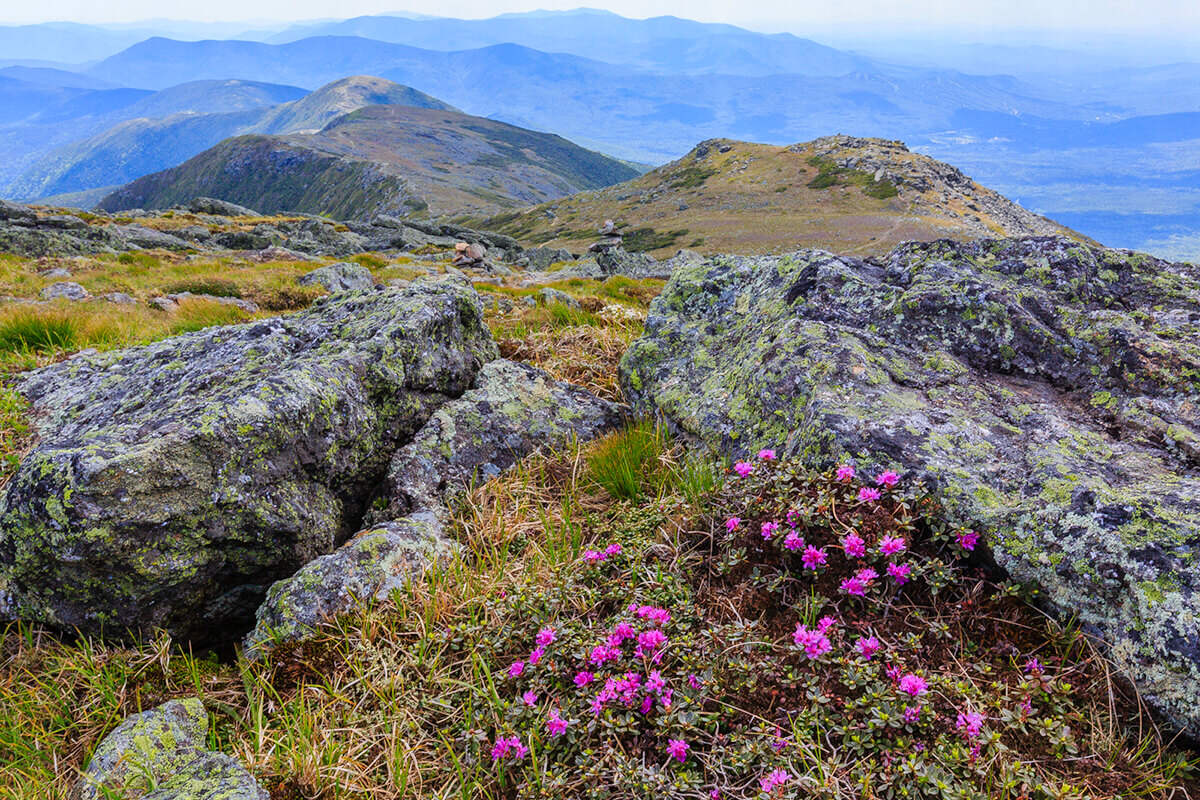Hidden Wonders Of Mount Washington’s Alpine Garden

Have you ever wondered what makes Mount Washington's Alpine Garden so special? This unique spot, located in New Hampshire, offers a breathtaking experience for nature lovers. Perched high above the treeline, the garden showcases rare alpine plants that thrive in harsh conditions. Visiting during late spring or early summer reveals a colorful tapestry of flowers, unlike anything found at lower elevations. The garden's beauty isn't just in its flora; the panoramic views of the surrounding mountains add to its charm. Whether you're an avid hiker or a casual visitor, exploring this hidden gem provides a memorable adventure.
Hidden Wonders of Mount Washington's Alpine Garden
Mount Washington, the highest peak in the Northeastern United States, is home to a unique and breathtaking alpine garden. This garden, perched high above the tree line, offers a glimpse into a world of rare plants, stunning views, and fascinating wildlife. Let's take a closer look at some of the hidden wonders you can find in this extraordinary place.
Rare Alpine Plants
The harsh conditions of Mount Washington's summit create a unique environment where only the hardiest plants can survive. These rare alpine plants are a testament to nature's resilience and beauty.
Diapensia Lapponica: This low-growing, cushion-like plant is one of the first to bloom in the alpine garden. Its tiny white flowers create a delicate contrast against the rocky terrain.
Alpine Azalea: With its bright pink flowers, the Alpine Azalea adds a splash of color to the otherwise stark landscape. This plant thrives in the cold, windy conditions of the summit.
Mountain Avens: Known for its yellow flowers and distinctive leaves, the Mountain Avens is a hardy plant that can withstand the extreme weather of Mount Washington.
Stunning Views
The alpine garden offers some of the most breathtaking views in the region. From the summit, you can see for miles in every direction, taking in the beauty of the surrounding mountains and valleys.
Tuckerman Ravine: This glacial cirque is a popular spot for hikers and skiers. From the alpine garden, you can see the steep walls of the ravine and the snowfields that linger well into summer.
Presidential Range: The alpine garden provides a panoramic view of the Presidential Range, a series of peaks named after U.S. presidents. On a clear day, you can see all the way to Mount Adams and Mount Jefferson.
Great Gulf Wilderness: This vast, untouched wilderness area lies to the north of Mount Washington. The alpine garden offers a bird's-eye view of its deep valleys and rugged terrain.
Fascinating Wildlife
Despite the harsh conditions, a variety of wildlife calls the alpine garden home. These animals have adapted to the extreme environment and are a testament to nature's ingenuity.
American Pipit: This small bird migrates to the alpine garden in the summer to breed. Its distinctive call and energetic behavior make it a delight to watch.
Rock Ptarmigan: This bird is a master of camouflage, changing its plumage to blend in with the rocky landscape. Spotting one is a rare and exciting experience.
Alpine Butterflies: Several species of butterflies can be found fluttering among the alpine plants. Their presence adds a touch of whimsy to the rugged environment.
Unique Geological Features
The alpine garden is not just about plants and wildlife; it also boasts some fascinating geological features. These formations tell the story of the mountain's ancient past.
Glacial Erratics: These large boulders were carried to their current locations by glaciers during the last Ice Age. They stand as silent witnesses to the mountain's glacial history.
Felsenmeer: This German term means "sea of rocks," and it perfectly describes the jumbled mass of boulders found in the alpine garden. These rocks were broken apart by freeze-thaw cycles over thousands of years.
Cirques: These bowl-shaped depressions were carved out by glaciers and are now home to some of the alpine garden's most interesting plants and animals.
Weather Phenomena
Mount Washington is famous for its extreme weather, and the alpine garden is the perfect place to witness some of these phenomena firsthand.
Rime Ice: This type of ice forms when supercooled water droplets freeze on contact with surfaces. The result is a stunning, otherworldly landscape of ice-covered rocks and plants.
Lenticular Clouds: These lens-shaped clouds are often seen hovering over the summit. They form when moist air flows over the mountain, creating a spectacular sight.
Alpenglow: This optical phenomenon occurs when the setting or rising sun casts a reddish glow on the mountain's summit. The alpine garden is one of the best places to experience this magical moment.
Embracing Nature's Beauty
Mount Washington's Alpine Garden offers a unique blend of breathtaking views, rare flora, and challenging trails. This hidden gem is perfect for those seeking adventure and tranquility. The diverse plant life and stunning landscapes make every visit memorable. Whether you're an experienced hiker or a nature enthusiast, the Alpine Garden provides an unforgettable experience. Remember to respect the delicate ecosystem by staying on marked trails and not picking any plants. Pack appropriately for changing weather conditions and always prioritize safety. Visiting this natural wonder not only enriches your appreciation for nature but also supports conservation efforts. So, lace up your hiking boots, grab your camera, and immerse yourself in the beauty of Mount Washington's Alpine Garden. This adventure promises to leave you with lasting memories and a deeper connection to the natural world.

